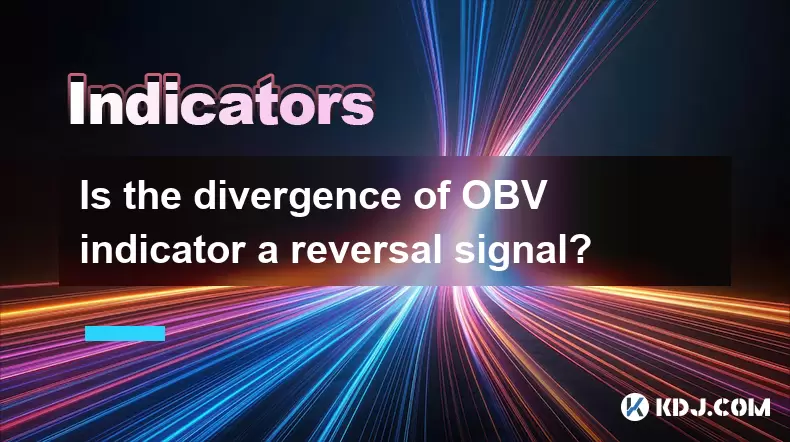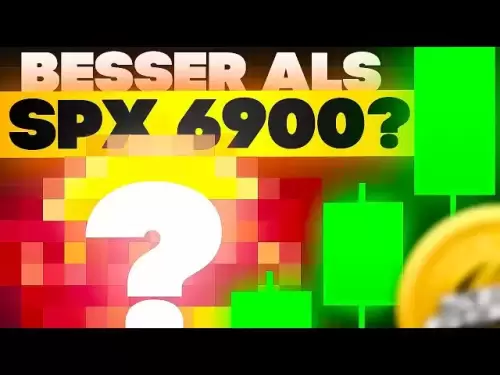-
 Bitcoin
Bitcoin $109,172.8137
0.38% -
 Ethereum
Ethereum $2,658.3912
1.88% -
 Tether USDt
Tether USDt $1.0000
0.00% -
 XRP
XRP $2.3797
3.33% -
 BNB
BNB $662.4084
0.26% -
 Solana
Solana $153.4873
1.09% -
 USDC
USDC $0.9999
-0.03% -
 TRON
TRON $0.2892
1.08% -
 Dogecoin
Dogecoin $0.1727
0.88% -
 Cardano
Cardano $0.6071
3.19% -
 Hyperliquid
Hyperliquid $39.6726
3.01% -
 Sui
Sui $2.9490
0.91% -
 Bitcoin Cash
Bitcoin Cash $504.1242
0.19% -
 Chainlink
Chainlink $13.9579
1.40% -
 Stellar
Stellar $0.2894
12.13% -
 UNUS SED LEO
UNUS SED LEO $9.0366
-0.42% -
 Avalanche
Avalanche $18.5386
1.26% -
 Hedera
Hedera $0.1698
5.36% -
 Shiba Inu
Shiba Inu $0.0...01211
1.76% -
 Toncoin
Toncoin $2.8140
1.36% -
 Litecoin
Litecoin $88.5278
1.45% -
 Monero
Monero $318.9246
1.63% -
 Polkadot
Polkadot $3.5204
2.37% -
 Dai
Dai $1.0000
0.00% -
 Ethena USDe
Ethena USDe $1.0008
0.07% -
 Uniswap
Uniswap $8.1741
5.45% -
 Bitget Token
Bitget Token $4.3516
0.94% -
 Aave
Aave $296.0756
1.87% -
 Pepe
Pepe $0.0...01026
0.49% -
 Pi
Pi $0.4619
0.07%
Is the divergence of OBV indicator a reversal signal?
The OBV indicator tracks volume flow to predict price changes, with divergence signaling potential trend reversals in assets like Bitcoin.
Jun 29, 2025 at 02:42 pm

What is the OBV Indicator?
The On-Balance Volume (OBV) indicator is a technical analysis tool that uses volume flow to predict changes in stock or cryptocurrency prices. It was introduced by Joseph Granville in the 1960s and has since been widely adopted across various financial markets, including cryptocurrencies. The basic premise of the OBV is that volume precedes price movement — meaning changes in trading volume can signal upcoming shifts in price direction.
OBV works by adding the day’s volume to a cumulative total when the closing price rises, and subtracting it when the closing price falls. This creates a running total that reflects buying and selling pressure over time. Traders often use this line in conjunction with price action to identify potential reversals or confirm trends.
Understanding Divergence in OBV
Divergence occurs when the price of an asset moves in one direction while the OBV moves in the opposite direction. In the context of cryptocurrency trading, divergence is considered a powerful signal because it suggests that the current trend may be losing momentum.
- Bullish divergence happens when the price makes a lower low, but the OBV makes a higher low. This indicates that despite falling prices, there is increasing volume on up days, suggesting accumulation.
- Bearish divergence occurs when the price makes a higher high, but the OBV makes a lower high. This implies that even though prices are rising, volume on down days is increasing, signaling distribution.
Recognizing these divergences requires careful chart analysis and understanding of both price and volume behavior.
How to Spot OBV Divergence in Cryptocurrency Charts
Identifying OBV divergence involves comparing the OBV line with the price chart. Here’s how to do it step-by-step:
- Plot the OBV indicator beneath your price chart. Most trading platforms like TradingView, Binance, or MetaTrader have built-in OBV indicators.
- Look for recent swing highs and lows in both the price and OBV lines.
- Compare the direction of the OBV with the direction of the price.
- Mark out any discrepancies where price and OBV move in opposite directions.
- Confirm divergence by checking if the OBV fails to follow the price movement consistently over multiple periods.
It's crucial to ensure that the divergence isn’t just noise caused by short-term volatility. Longer-term divergences tend to carry more weight than intraday fluctuations.
Is OBV Divergence a Reliable Reversal Signal?
While many traders treat OBV divergence as a reversal signal, its reliability depends on several factors:
- Market conditions: In highly volatile markets like crypto, OBV divergence can occur frequently without leading to actual reversals.
- Timeframe: Shorter timeframes may produce false signals due to erratic volume spikes. Using OBV on daily or weekly charts tends to yield more reliable results.
- Confirmation tools: Relying solely on OBV can be risky. Combining it with other indicators such as Moving Averages, RSI, or MACD increases accuracy.
Traders should not act on OBV divergence alone; it should serve as a warning rather than a direct trade signal. Proper risk management and confirmation from other sources are essential before making a decision based on OBV divergence.
Practical Example: OBV Divergence in Bitcoin Trading
Let’s take a real-world example using Bitcoin (BTC):
- Suppose BTC reaches a new high at $70,000, but the OBV line does not confirm this high and instead forms a lower peak.
- This bearish divergence could indicate that volume is decreasing on up days, suggesting weakening buying pressure.
- If this is followed by a breakdown below a key support level, it may confirm the reversal.
- Conversely, if BTC drops to $65,000 while the OBV forms a higher low, this bullish divergence might suggest institutional accumulation is taking place.
Analyzing such scenarios helps traders understand the importance of volume in confirming or denying price action.
Frequently Asked Questions
Q: Can OBV divergence occur in sideways markets?
Yes, OBV divergence can appear in ranging markets. However, its significance diminishes in such environments since neither buyers nor sellers are gaining control.
Q: Is OBV better suited for certain cryptocurrencies?
OBV works best with assets that have consistent volume patterns. In the crypto space, major coins like Bitcoin and Ethereum typically provide clearer OBV signals due to their higher liquidity and volume.
Q: How often should I check for OBV divergence?
You should monitor OBV divergence regularly, especially around key support/resistance levels or after strong price moves. Daily and weekly charts are ideal for spotting meaningful divergences.
Q: Does OBV work well in bear markets?
In bear markets, volume can be erratic. While OBV can still offer insights, it’s more effective when used alongside other tools like volume-weighted moving averages or sentiment indicators.
Disclaimer:info@kdj.com
The information provided is not trading advice. kdj.com does not assume any responsibility for any investments made based on the information provided in this article. Cryptocurrencies are highly volatile and it is highly recommended that you invest with caution after thorough research!
If you believe that the content used on this website infringes your copyright, please contact us immediately (info@kdj.com) and we will delete it promptly.
- NEXBRIDGE, NEXPLACE, and the Bitcoin Ecosystem: Building a New Financial Frontier
- 2025-07-09 23:10:13
- MEXC Launchpad & PUMP Token: Grab a 40% Discount?
- 2025-07-09 22:50:12
- Trade System Revolution: How XDC and the End of Faxes Are Reshaping Finance
- 2025-07-09 23:10:13
- Ripple, CLARITY Act, and the XRP Case: A New York Minute on Crypto Regulation
- 2025-07-09 23:50:12
- No Rs 50 Coin? Delhi HC Hears Why India Prefers Banknotes
- 2025-07-09 23:15:11
- No Rs 50 Coin? Delhi HC Hears Why Banknotes Reign Supreme
- 2025-07-09 23:50:12
Related knowledge

How to trade Dogecoin based on funding rates and open interest
Jul 07,2025 at 02:49am
<h3>Understanding Funding Rates in Dogecoin Trading</h3><p>Funding rates are periodic payments made to either long or short traders ...

What is the 'God Mode' indicator for Dogecoin
Jul 07,2025 at 04:42pm
<h3>Understanding the 'God Mode' Indicator</h3><p>The 'God Mode' indicator is a term that has emerged within cryptocurrency trading ...

Using Gann Fans on the Dogecoin price chart
Jul 07,2025 at 09:43pm
<h3>Understanding Gann Fans and Their Relevance in Cryptocurrency Trading</h3><p>Gann Fans are a technical analysis tool developed b...

How to spot manipulation on the Dogecoin chart
Jul 06,2025 at 12:35pm
<h3>Understanding the Basics of Chart Manipulation</h3><p>Chart manipulation in the cryptocurrency space, particularly with Dogecoin...

Dogecoin market structure break explained
Jul 07,2025 at 02:51am
<h3>Understanding the Dogecoin Market Structure</h3><p>Dogecoin, initially created as a meme-based cryptocurrency, has evolved into ...

How to backtest a Dogecoin moving average strategy
Jul 08,2025 at 04:50am
<h3>What is a Moving Average Strategy in Cryptocurrency Trading?</h3><p>A moving average strategy is one of the most commonly used t...

How to trade Dogecoin based on funding rates and open interest
Jul 07,2025 at 02:49am
<h3>Understanding Funding Rates in Dogecoin Trading</h3><p>Funding rates are periodic payments made to either long or short traders ...

What is the 'God Mode' indicator for Dogecoin
Jul 07,2025 at 04:42pm
<h3>Understanding the 'God Mode' Indicator</h3><p>The 'God Mode' indicator is a term that has emerged within cryptocurrency trading ...

Using Gann Fans on the Dogecoin price chart
Jul 07,2025 at 09:43pm
<h3>Understanding Gann Fans and Their Relevance in Cryptocurrency Trading</h3><p>Gann Fans are a technical analysis tool developed b...

How to spot manipulation on the Dogecoin chart
Jul 06,2025 at 12:35pm
<h3>Understanding the Basics of Chart Manipulation</h3><p>Chart manipulation in the cryptocurrency space, particularly with Dogecoin...

Dogecoin market structure break explained
Jul 07,2025 at 02:51am
<h3>Understanding the Dogecoin Market Structure</h3><p>Dogecoin, initially created as a meme-based cryptocurrency, has evolved into ...

How to backtest a Dogecoin moving average strategy
Jul 08,2025 at 04:50am
<h3>What is a Moving Average Strategy in Cryptocurrency Trading?</h3><p>A moving average strategy is one of the most commonly used t...
See all articles

























































































